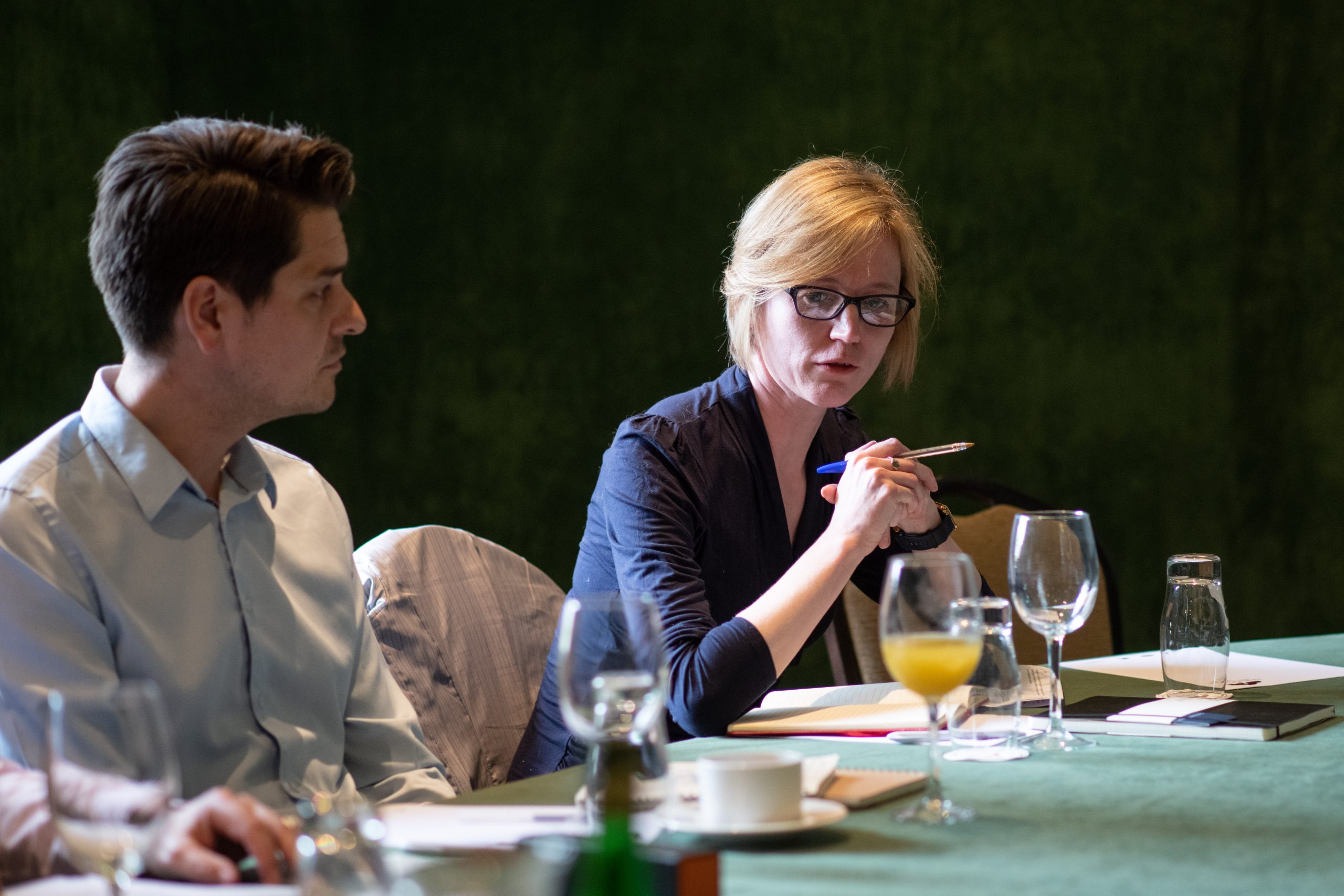Build & Sustainability
Roundtable: Building a more sustainable healthcare sector
June 13, 2023
Why a refreshed architectural approach to care provision is key to planetary and personal wellbeing
From scientific findings to attention-grabbing demonstrations, the spectrum of climate emergency awareness continues to widen.
And its influence is felt no more keenly than across the business world where, beyond the papers and protests, increasing layers of environmental, social and governance policy is being conceived and conveyed to create a healthier future for the planet and its people.
A roundtable discussion, hosted by North East Times Magazine alongside award-winning architectural practice Corstorphine & Wright, analysed this evolving landscape, with sector leaders and key academic thinkers investigating wellbeing through the prism of sustainability.
Using the healthcare sector, in particular care homes and assisted living developments, as a case study, panellists assessed future direction from the intersection of design and wellness.
Examining the impact of physical and technological change alongside social and cultural revision, speakers discussed a raft of measures focused on creating a more sustainable care environment that, crucially, retains patients’ and residents’ needs at its core.
Words by Steven Hugill
Photography by Angela Carrington
THE ROUNDTABLE DISCUSSION FEATURED:
· Iain Garfield
Director of estates and facilities, Newcastle University
· Karen Crowe
Director and head of ESG (environmental, social and governance), Corstorphine & Wright
· Sara Thakkar
Chief executive, Camphill Village Trust
· Tony Tench
Deputy chief executive, Housing 21
· Toby Ingle
Associate director, Corstorphine & Wright
· Dr Carolyn Gibbeson
Assistant professor, department of architecture and built environment, Northumbria University
· Ian Cornwell
Director, Kraken IM
· John Duns (chair)
Director, North East Times Magazine
WHAT DOES THE PRESENT CARE LANDSCAPE LOOK LIKE?
To pull on centuries’ old philosophical threads, to understand the future requires first a detailed appreciation of the past.
And in a world where swells of economic and environmental change continue to clash with ever-rising waves of social and cultural transformation, such command has arguably never been more important.
And the UK’s care sector, cautioned roundtable members, must heed some historical lessons.
For too long, said delegates, the very meaning of the healthcare industry, certainly across care homes and assisted living, has operated contrarily, with homogeneity and no little stigma exacerbating identity loss and a reduction of confidence among patients and residents.
Sara Thakkar, chief executive at Camphill Village Trust, which provides support for adults with learning disabilities from urban and rural community hubs across the UK, called for a “revolution”.
She said: “Back in the 1950s and 1960s, a lot of older people provision was built around transforming old workhouses.
“And with the way care is displayed, often loudly in traditional and social media, it creates a horrific picture.
“Too often, we see people are degenerated to a state that they cannot cope in life, with a narrative that they have no choice and are treated poorly.
“It’s not the reality, but it is the story that is portrayed.
“And we must revolutionise that; we must continuously challenge to remove the stigma and re-energise and reposition what the care sector is all about.
“People will make decisions at different times based on inferences being created – and many will therefore leave it too late, which is where it becomes a challenge for the health sector.”
Karen Crowe, director and head of ESG (environmental, social and governance) at architectural practice Corstorphine & Wright, concurred, saying the industry must move away from a deep-rooted demarcation.
She said: “Essentially, we’ve created a silo.
“It’s almost a feeling of, ‘when you get to this stage of your life, you need ‘x’ level of care, but you can only have it in one setting with other people, who are all like you’.
“We need to shake things up – and the best way to do that is by taking a holistic approach.”
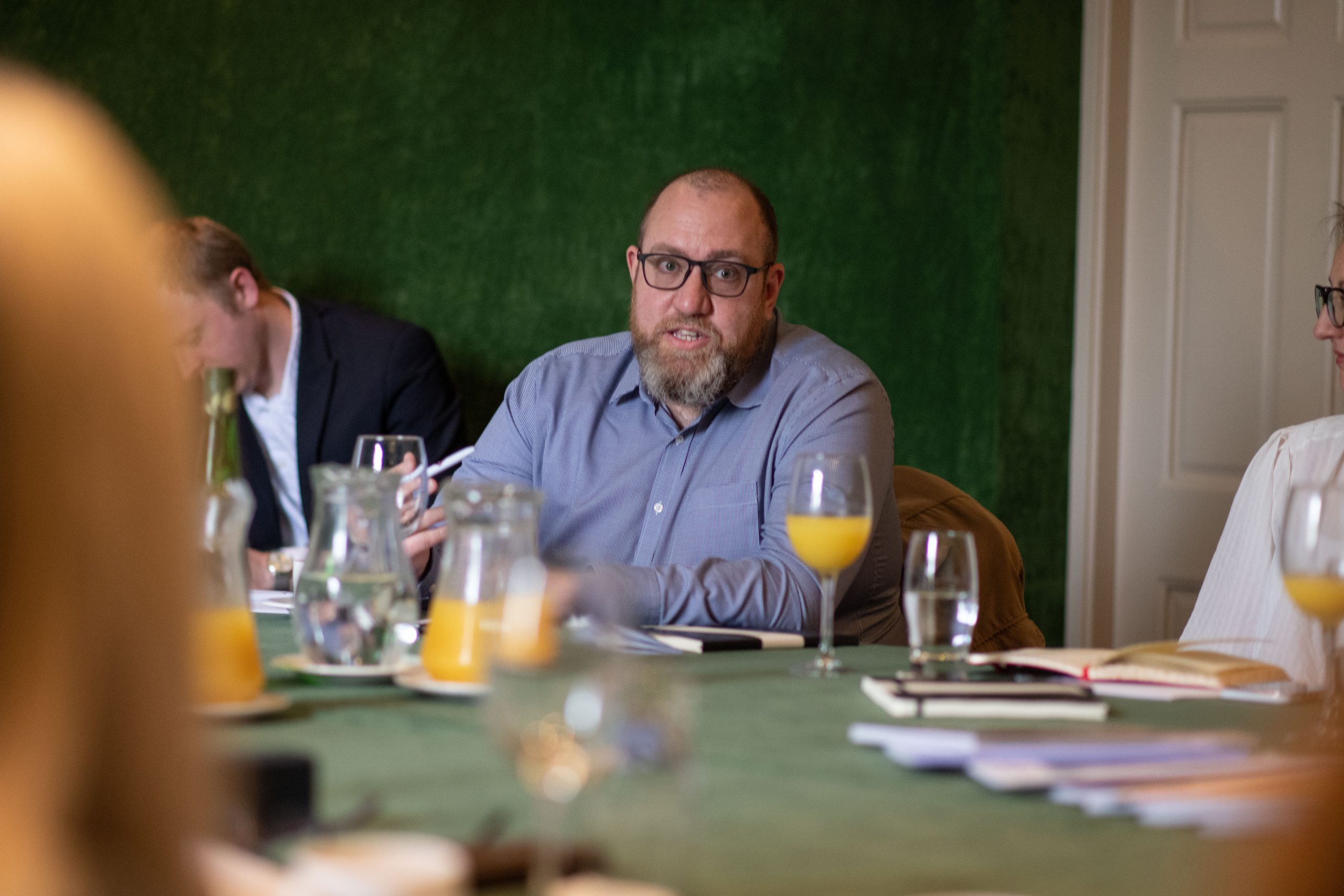
SO, HOW DO WE ACTION TANGIBLE CHANGE ACROSS THE SECTOR, TO NOT ONLY IMPROVE PERCEPTIONS OF HEALTHCARE BUT PHYSICAL SERVICES TOO? AND HOW CRUCIAL IS BUILDING DESIGN IN DELIVERING SUCH TRANSFORMATION?
We are all guided by routines, the comfort and familiarity of our social and cultural tics – whether obvious or subliminal – inherent to our very existence.
So why then, argued roundtable members, should we be at risk of a counterintuitive loss of such reassurance, and the freedom it helps conjure, when we switch to a care home or assisted living development?
To help alleviate such, delegates pinpointed the importance of building design, advocating the creation of spaces capable of delivering health support while retaining the ability to remain connected with the world around.
Toby Ingle, associate director at Corstorphine & Wright, said: “On a basic level, whatever your age, you want to be engaged.
“You want to be able to look out of the window to see, for example, a forest of trees blowing in the wind or the bus coming past, or, in a lot of cases, the postman arriving, not least because they hold interest but also mark certain points in a day.”
Sara highlighted the need for understanding of a “far greater interconnected picture”, which melds people’s needs and desires with changes to building design that complement the planet’s sustainability goals.
“We need to think differently when we’re designing homes, to ensure they are both accessible and providing value towards a healthy life,” said Sara, whose Camphill Village Trust portfolio includes the Larchfield Community support base, in Hemlington, near Middlesbrough.
She added: “Does an environment allow us to take exercise or grow vegetables, for example?
“And, alternatively, if we’re in an urban setting and we don’t have that landscape, how do we use design to bring nature inside?
“If we have brick or plant walls, how do we ensure they can be moved, based on the fact someone who wasn’t in a wheelchair when they arrived is now using one?
“We’re looking at something that is person-centric, which the building wraps around, to provide equity and equality.”
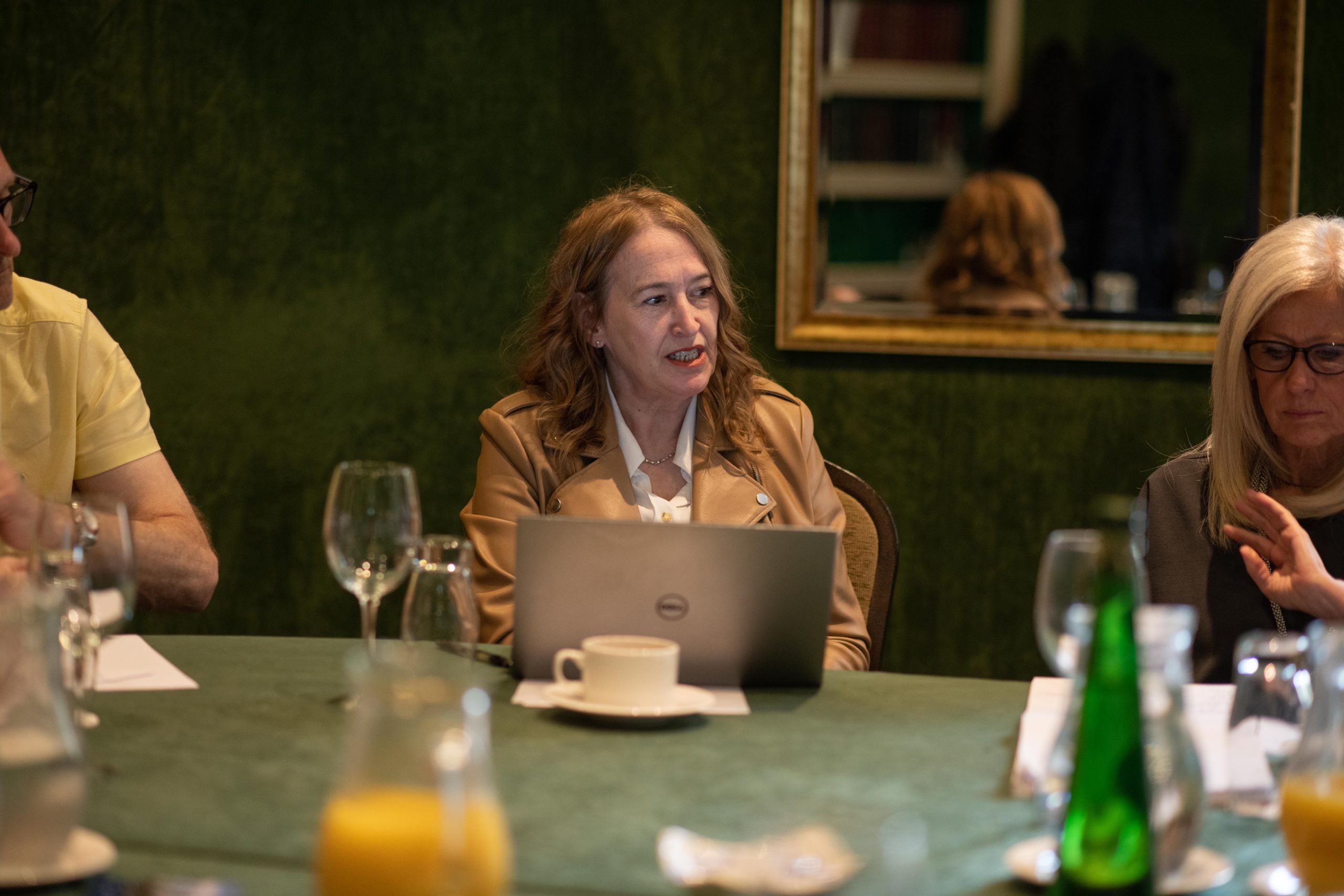
HOW IMPORTANT ARE PATIENTS’ AND RESIDENTS’ NEEDS AND WANTS IN DELIVERING CHANGE ACROSS THE CARE SECTOR?
Karen and Toby drew on the significance of location in developments’ ability to satisfy differing requirements.
Toby said: “Before we even get to design, there is a conversation to be had on where a building should be based.
“We’re all very good at picking a site in a greenbelt area, which is beautiful for residents, but one of the biggest challenges that comes with doing that is sourcing staff – where are they going to come from?
“On the other side, there is a real trend for healthcare on the high street – we’re taking diagnostic imaging out of hospitals and putting them in shopping centres, for example – and that makes the urban location very interesting in this discussion.”
Karen said the design phase must ensure any location searches are couched with understanding of social and infrastructure chains to dispel certain perceived requirements.
She said: “Intergenerational communities are where we need to be with regards people at older stages of their lives, because it helps combat loneliness.
“The perception can sometimes be that older people want some peace and quiet, and that being next to a school or nursery, for instance, would be a disruption.
“But, actually, just looking out and seeing children running around can be a positive thing, and could potentially provide opportunities for the establishment of a partnership between a care setting and a school or nursery, which would bring communities together.
“Needs analysis must come before you put pen to paper; until you really understand the community or individual you are designing for, you’re on a rocky road to making a fundamental mistake.”
Tony Tench, deputy chief executive at Housing 21 – which recently unveiled plans for an assisted living development in Guisborough, east Cleveland – added his support to Karen’s argument, drawing on previous experiences in the Midlands.
He said: “I think we make big assumptions about what people want; we need to do more to understand who we are trying to provide for.
“We’re working with a very deprived community group in inner-city Birmingham on a co-housing scheme.
“We took them to a new extra care scheme, complete with green spaces, and they were very complimentary.
“But when we asked how they felt about living there, they said no.
“It proved everyone is different, that community and connections are so important, and that people don’t mind looking at a brick wall or even an A-road if it means retaining those links.”
Iain Garfield, director of estates and facilities at Newcastle University, was equally effusive on the importance of fostering connected living spaces, using the institution’s £500 million Campus for Ageing and Vitality (CAV) as a case study.
Approved last year, the sprawling development will feature residential and commercial properties, assisted living housing, high care home accommodation and retirement space on Newcastle’s former General Hospital site.
Praising its potential, he added its fundamental principles chime with those of the Netherlands-based Hogeweyk ‘dementia village’, which bosses say promotes greater intergenerational living thanks to a reshaping of the traditional nursing home concept.
He said: “You have to get the balance right.
“A development in a city or town centre sounds great, but it’s about the whole scape; there must be understanding of the amenities available beyond the building.
“And CAV is a great example,” said Ian of the scheme, which is supported by Newcastle City Council; Newcastle upon Tyne Hospitals NHS Foundation Trust; Cumbria, Northumberland, Tyne and Wear NHS Foundation Trust; Newcastle Gateshead Clinical Commissioning Group and the North of Tyne Combined Authority.
He added: “Far from being an ‘old people’s ghetto’, it is a 29-acre site that gives fantastic opportunity to provide everything in one place, while still being integrated within the community.
“We’ve not only got the chance to create traditional housing for ‘normal living’, but we have scope too for carers – and their families – to live on site.
“At the moment, there are walls around the development, but there is fantastic opportunity to spread out, move into the local community – including potential links with a school next door – and create an intergenerational site.
“It is all designed around putting people first.”
THE WORLD IS A RAPIDLY CHANGING PLACE, WITH MORE FOCUS ON SUSTAINABILITY THAN EVER BEFORE. HOW DOES THE GREEN AGENDA FEED INTO THE DRIVE TO CREATE MORE CONNECTED, INCLUSIVE COMMUNITIES?
Panellists were united over the inextricable link between improvements to care sector provision and the global sustainability drive.
But effecting such practice, they agreed, comes with no little difficulty.
Physical change is one thing, but arresting decades of assumed norms and how people think about, and interact with, a building and its systems, is quite the other.
And, said Karen, it isn’t a situation that will be solved swiftly, despite continued technological advances.
Karen said: “The sustainability agenda demands huge cultural change.
“It is getting to be less demanding with younger generations but, for the vast majority, certainly from some social class backgrounds, it is presently a step too far.
“Arguments still remain in some quarters around the notion that ‘I’ve worked all of my life to put the heating on and keep myself warm, and that is what I will continue to do’.
Toby had the same opinion, placing the onus on the design sector to spearhead environmental measures capable of hitting headline carbon figures while enveloping a wider spectrum of society.
He said: “The want and ask of people is growing; market forces across my generation and the one following it are demanding more sustainable elements to be intertwined with services.
“But, at the same time, we’ve got a deadline to meet net-zero targets, and we can’t just sit and wait for those generations to come through and demand those assets.
“We have to answer the question around what physical measures we can start applying to buildings now, whether they are existing or new build, to continue the sustainable agenda.
“We need to be ahead of the game.”
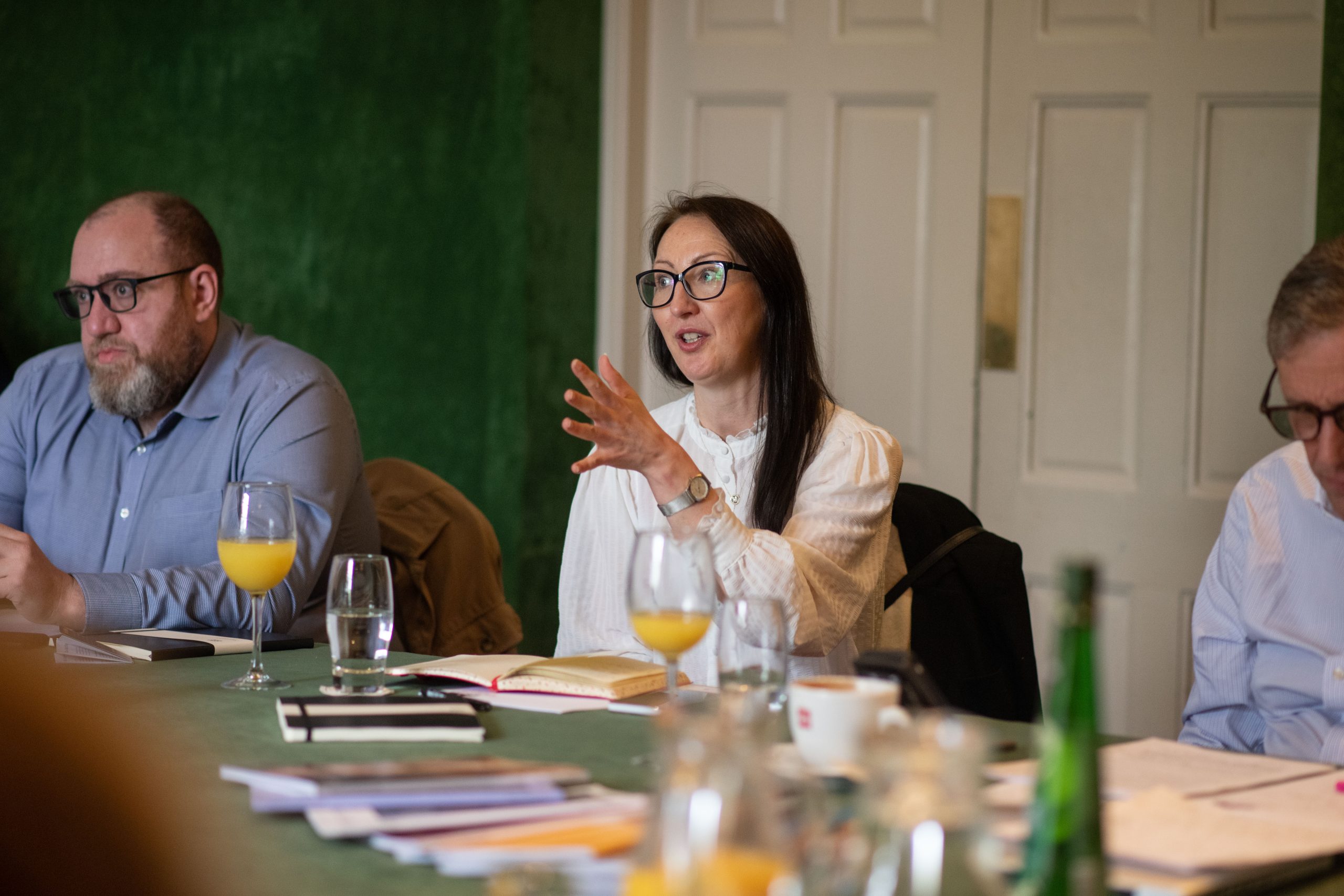
IF ATTITUDES TO ENVIRONMENTAL CHANGE, CERTAINLY IN OLDER GENERATIONS, REMAIN LETHARGIC, ARE WE AT RISK OF MISSING SUSTAINABILITY GOALS? IS THERE A WIDER EDUCATIONAL PROGRAMME REQUIRED TO SHIFT MINDSETS?
Roundtable members were universal in their belief that watershed change to properties by way of more sustainable technology, such as air source heat pumps, is the correct direction of travel.
But they also concurred that if inhabitants receive no teaching on such apparatus, and the legacies of past thinking continue to permeate, then the green drive will stall before it hits anywhere near top gear.
Tony said: “We’ve tried to move away from fossil fuels, but it is proving challenging.
“Every time we do an assessment of residents’ options, we take in mind their comfort, affordability and control, and gas so often comes out on top in their preferences.”
He added: “There is a big education piece around heat.
“For the majority of their lives, many people have understood if the heating is on by touching the radiator.
“And not having the ability to do that is quite a concern for some.”
Dr Carolyn Gibbeson, assistant professor in the department of architecture and built environment at Northumbria University, agreed there was an educational void to fill, using the Passive House scheme – in which homes are fitted with extremely high levels of insulation, high performance windows, airtight fabric and ventilation systems complete with heat recovery mechanisms to boost energy efficiency – as reference.
She said: “With Passive Houses, the biggest problem is not the property but the person in it, who tries to use it as they would a ‘normal’ home.
“If you are used to opening a window to let fresh air in, which the older generation are, then that causes issues in a Passive House.”
Karen added: “You can design and technologise every element of the built environment, but you cannot be definite about how people are going to use a building.
“The social element cannot be underplayed.”
WHAT ABOUT THOSE WORKING IN THE HEALTH SECTOR? IF CARERS ARE NOT FULLY COGNISANT OF TECHNOLOGICAL CHANGE, OR PROGRAMMES ARE TROUBLESOME TO OPERATE, WHAT IMPACT COULD THAT POTENTIALLY HAVE ON PATIENTS’ HEALTH AND WELLBEING, AS WELL AS THEIR OWN?
As anyone who has moved into a property, old or new, will attest, for all the (often brief) tutorials on heating systems, boiler operation and appliance use, when the deal has completed and the front door closes for that first time, it’s a voyage of discovery.
And the panel invoked such feeling during the discussion, highlighting the importance of care sector workers comprehending technological change alongside their full-time roles.
Sara said: “Staff have to be able to manage this spangdangled kit.
“But a care home, or a small care setting, probably doesn’t have a high enough level of education on such systems.
“And that’s problematic, because if you’re not technically focused, that kit costs money and creates bills that are fundamentally impossible to pay for.
“A balance of understanding is absolutely key.”
Ian Cornwell, director at Middlesbrough-based information management company Kraken IM, which provides firms with software to digitise supply chains, boost intelligence gathering and minimise risk, called for greater identification with users.
He said: “How do you change design thinking, so it has empathy with the people operating it?
“For example, if I want to install a spaceship, but Alf the caretaker, who’s been at the business forever, is used to a coal-fired furnace, then I’m probably going to have issues down the line.
“It comes down to understanding what you are designing from several different aspects, not just how it looks or performs.”
Dr Gibbeson agreed, highlighting the need for a detailed handover process once construction is complete.
She said: “How does the process of passing on skills and education work?
“Technology moves fast, so we need to keep up with the training.”
Iain Garfield said a good way of bridging any divide is via a soft landings manager, who acts as an interface between architect, builder and employee community to ensure systems are operational and their intricate methods conveyed to users.
He added: “Keeping all building users engaged is so important.
“And if done well, the soft landings process keeps people at the fore of the design.”
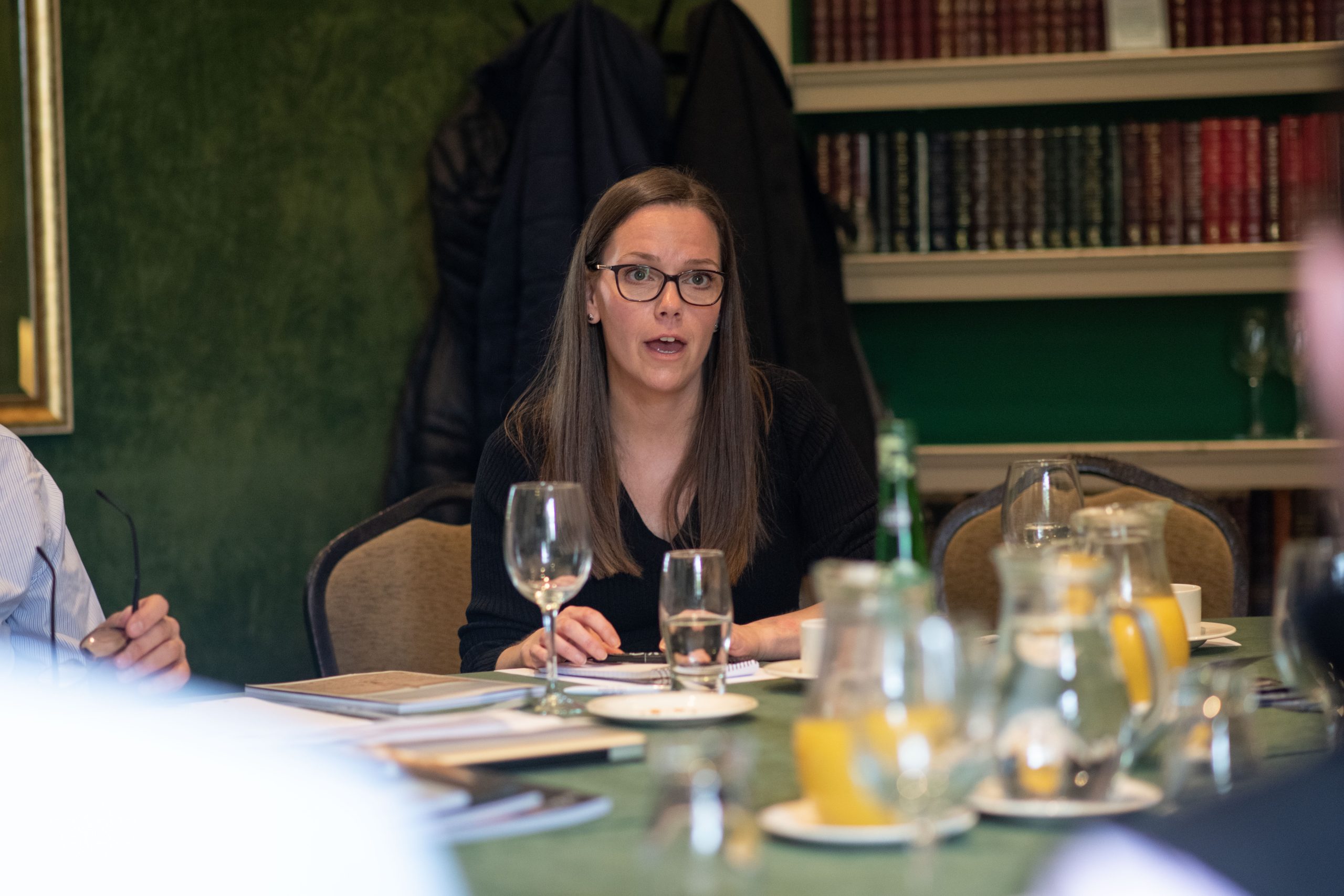
WILL SUSTAINABLE DESIGN HELP CARERS DO THEIR JOBS MORE EASILY AND EFFECTIVELY, AND HELP FACILITY OWNERS AND MANAGERS KEEP A HANDLE ON BUDGETS TO CONTINUE OFFERING THE BEST SERVICE POSSIBLE?
Understanding technology and its workings is one thing, but, said roundtable members, if equipment impacts service delivery, then its potency is negated.
Toby said: “We should be more intuitive.
“We can put sensors in rooms to turn lights on and off, control temperature and alert staff if someone has fallen to the floor.
“But that technology has to be there as a support – it cannot be another thing staff have to do.
“We’ve got to develop and wrap building systems around flows of care.”
Tony added: “If there are problems along the way, it really gets in the way of delivering service.
“And we also need to think about healthcare workers’ needs in design and operation.
“If they’re running up and down corridors with the heating set to 25 degrees, and they have no understanding of how to use the technology to change it, that will make for a really difficult time.”
WHAT ABOUT THE PHYSICAL ASSET? WHEN TALKING ABOUT SUSTAINABILITY IN THE CARE SECTOR, JUST HOW SIGNIFICANT IS FINDING A BALANCE BETWEEN NEW BUILD SCHEMES AND BUILDING REFURBISHMENTS?
“Half of a building’s lifecycle carbon comes from the construction phase, which means retrofit beats new build every time,” said Ian Cornwell.
So, refurbishment, rather than a wrecking ball, in today’s increasingly sustainable world, is the obvious route to meaningful change?
Yes. But is it happening? Well, not quite.
Despite the palpable environmental benefits, roundtable members cited a number of barriers, such as costs and cultural attitudes, which continue to stymie large-scale retrofitting programmes.
Toby said: “There remains a lot of cynicism around the costs of refurbishment.
“A lot of the time retrofitting is scored out because it won’t deliver core attributes.
“But we really need to challenge the approach.”
Ian Cornwell picked up the discussion, contrasting cost sentiment against the life-impacting ramifications of new build projects.
He said: “This isn’t just about direct monetary costs.
“Statistics show that for every 4400 tonnes of CO2 emitted, there is one excess death.
“And that is why the social and wider costs to society should be factored in any development decision.”
Tony agreed, citing more than half-a-decade’s work by Housing 21 to highlight older buildings’ worth in the green agenda.
He said: “Making existing homes viable for the future is far more sustainable than knocking things down and rebuilding everything.
“We’ve modernised and refurbished properties to the point they all now carry a C-rated energy performance certificate (the Government-stipulated level required of social landlords by 2030).”
Iain Garfield too spotlighted a prevalent case study, this time Newcastle University’s revamp of the towering 1960s Henry Daysh Building, which straddles the city’s Claremont Road, to emphasise the inherent value of retrofitting.
He added: “The property had no insulation and single glazed windows.
“We took it back to its concrete frame and repurposed it, and the carbon savings were massive.”
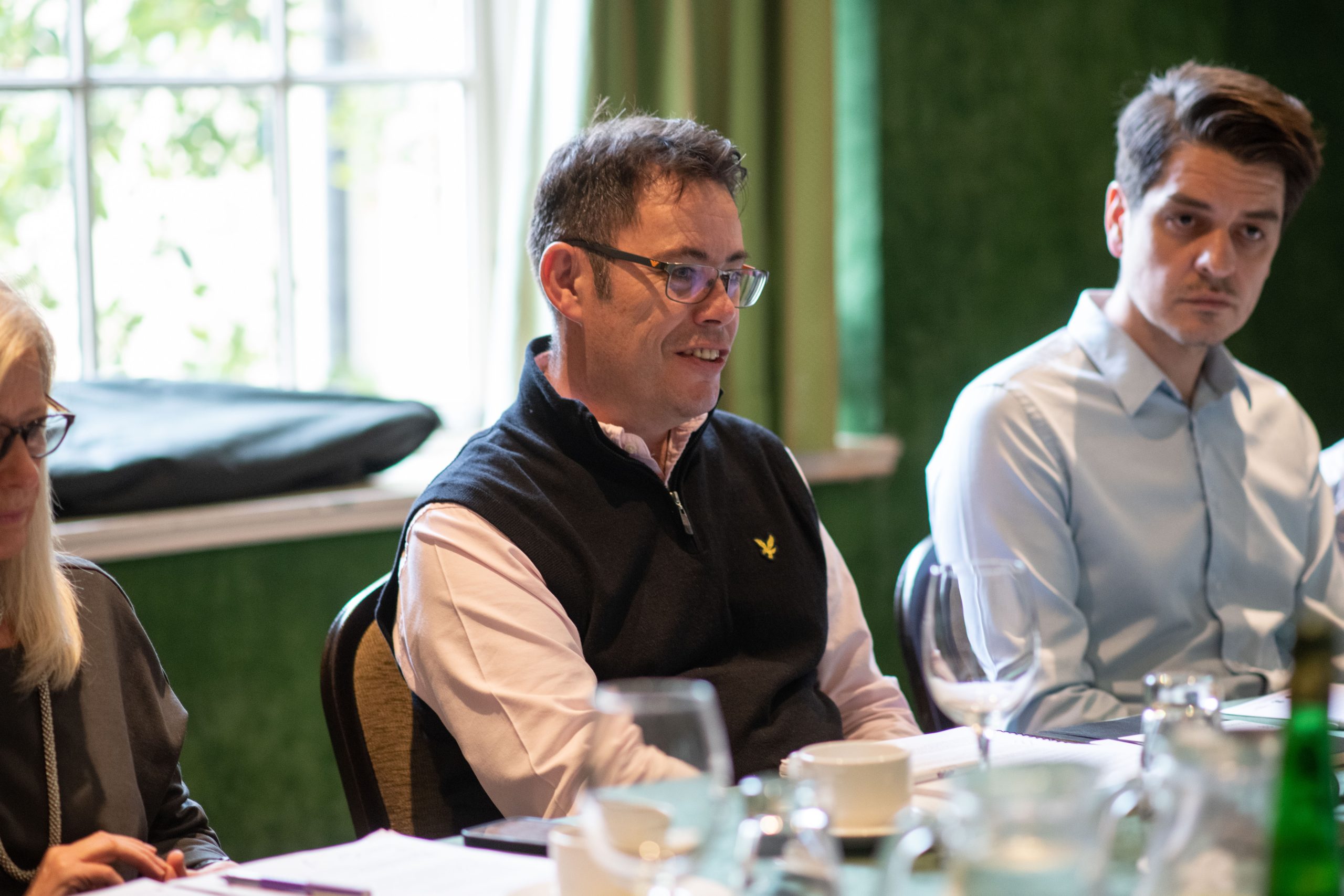
SO, WHAT DOES THE FUTURE OF SUSTAINABLE DESIGN AND CONSTRUCTION LOOK LIKE ACROSS THE HEALTHCARE SECTOR?
In a world of anacronyms and buzz phrases, it shouldn’t perhaps come as too much of a surprise the green agenda has many a shorthand term.
And from a simple few clicks on a search engine, it takes no time to arrive at one of them – the sustainability tightrope.
Conjuring images of the planet in full-on funambulist mode, teetering precariously on an ever-eroding highwire, it rather neatly frames the vertiginous scale of the climate emergency.
And panellists were quick to emphasise the severity, with Ian Cornwell urging much greater awareness and application of environmentally-friendlier alternatives in the building phase.
He said: “The construction industry produces 12 per cent of the planet’s emissions, and healthcare construction is a demonstrable part of that.
“We need to think about constructing with the lowest possible carbon footprint, choosing design materials that suit and which fit with a specific building need.”
And such change is beginning to happen, said Ian, with governing legislation becoming ever more focused on sustainability.
He added: “At the moment, there are lots of standards, but the regulations are pretty powerless.
“However, we’re going to see a slew of regulations coming through.
“Change is already happening in the EU, and there are a lot of US states that require reports on a development’s body count number.
“And if they are not supplied, a project doesn’t get a building permit.
“Reporting and regulation is going to get a lot tighter.”
However, while acknowledging the statutory oscillation, both Karen and Sara spoke with caution about the impact of bureaucratic change when it comes to the care industry.
With lenders progressively factoring ESG requirements into investment decisions, they warned such increased stringency actually runs risk of creating an unhealthy paradox.
Karen said: “That the funding criteria is changing, and that operators and their supply chains must have carbon plans, is a very powerful thing.
“But it also means we have a model of care that is fundamentally underpinned by someone making a profit.
“And until you get real traction that social impact investing is ethical and not a box-ticking exercise, then you’re going to find it hard to stop that model.”
Sara added: “There is a systemic disconnect between buildings, people and the planet, as well as care and provision.
“On one hand, we’re talking about the future for people, be it social care, a health society or the NHS, and on the other, we’re talking about what the banks, funders and regulators want.
“There is no connection in that narrative, and we need reintegration; if we continue to fight around the edges, it’s not going to work.
“We must start with the person and understand their individual needs, and then wrap a sustainable solution around them.
“And it must all be done in a holistic manner.”
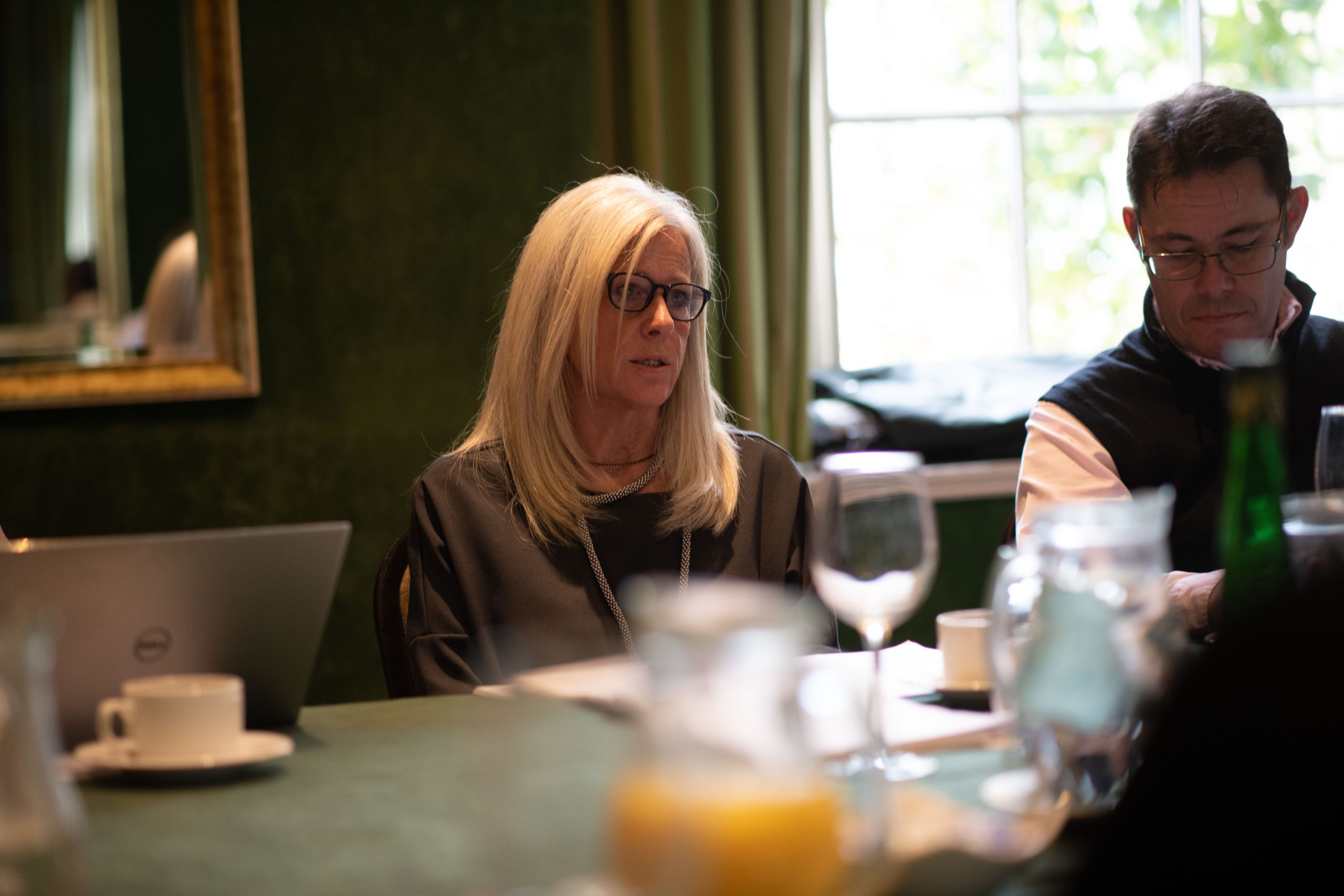
CORSTORPHINE & WRIGHT
Corstorphine & Wright is an award-winning architectural practice with 11 UK studios, which include bases in Darlington and Newcastle, and 270-plus people. Ranked at number 22 in the AJ100, Corstorphine & Wright designs spaces with elusive must-have quality, translating requirements, constraints and opportunities into places that are more than the sum of their parts, and which invigorate communities and maximise long-term civic and commercial value.
KAREN CROWE
Karen has worked in the built environment sector for more than 20 years, and is passionate about how individuals, and the wider collective, can give back to the communities Corstorphine & Wright is working in, while the practice plays its part in responding to the global climate crisis. The aspiration for Corstorphine & Wright is to become renowned as a socially aware, ethical employer and sustainable architecture practice. In her role as head of ESG, Karen is responsible for developing and overseeing all environmental, social and corporate governance policies and procedures, as well as reporting on, collating and disseminating good practice and generated knowledge across Corstorphine & Wright’s internal network, and supporting its winning of work.
TOBY INGLE
Toby has more than 15 years’ experience, specialising in the healthcare and science sectors. Working from concept to delivery, his experience spans primary, secondary, mental health, private health and residential care settings. Drawing on his breadth of experience, Toby also assists clients in the development of clinical masterplans, development control plans and estates strategies, identifying opportunities for new clinical and sustainable development, as well as opportunity for land. Most recently, he supported NHS England on the production of new guidance to support the future delivery of healthcare developments.
